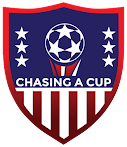

USMNT
Generation Adidas U17 Report
Published
4 years agoon
I did it for you all. I watched every broadcasted U17 match that featured an American MLS team. That means I was able to watch these clubs, some multiple times: Atlanta, LAFC, NYCFC, Seattle, Minnesota, LA Galaxy, NYRB, San Jose, Philadelphia, Columbus, Austin, Charlotte, Cincinnati, DC United, Miami, Houston and Real Salt Lake.
The following clubs did not get a broadcast at the U17 level: New England, Dallas, Orlando, KC, Portland, St. Louis, Colorado, Nashville or Chicago.
The U17 level consists of players born in 2005, 2006 and there were numerous players born in 2007 that were playing up a level. The 2005 age group has been a bit of a forgotten one from a Youth National Team (YNT) perspective, though the USSF just announced the hiring of Marko Mitrovic to lead the U19 group, which will focus on the 2005 age group. The reason they have been a bit of an afterthought is because the 2023 U20 World Cup will mostly feature 2003s and 2004s and the 2023 U17 World Cup will feature 2006s and 2007s.
Scouting players at this level is challenging. It can be messy. I rate players based on three categories: physical ability (strength, speed, quickness, explosiveness), technical ability (touch, dribbling, passing, shooting, tackling) and tactical/intellectual ability (creativity, mental processing, toughness).
At this age, I am looking for peaks and am not necessarily too concerned about valleys. I am looking for elite traits, even if they show up inconsistently. Obviously the players that do it more consistently get noted, but the key at this level is identify what a player could be and hope that through development, physical and mental maturation, and luck; the consistency will come and the areas of weakness can become strengths.
I’ve gone position by position to identify players that caught my eye:
Goalkeepers
Emmy Ochoa, San Jose Earthquakes (2005)
Emmy Ochoa is a Mexican-American that has played for Mexico at the U18 level, but is eligible to play for the US and is a likely target for the 2005 group. He signed as a homegrown player with San Jose as a 14 year old and currently starts for Earthquake II in MLS Next Pro. He’s the best 2005 US-eligible keeper that I have scouted. What stood out to me in the match I watched Emmy play vs River Plate was his ability with the ball at his feet and his intensity.
Jonathan Munteanu, Houston Dynamo (2005)
Jonathan has not played as a Youth International and is not on a pro contract, nor has he played for Dynamo 2. Jonathan caught my eye because of the explosiveness and demanding presence he showed between the pipes.
Left-Backs
Brian Alanis, Houston Dynamo (2006)
Brian Alanis is a youth international that has most recently joined a U17 camp in January. I liked Brian’s ability to maneuver in tight spaces and he has a really nice touch. He showed the ability to both initiate positive transitions and get on the end of transitional play by flying up the left sideline.
Christian McFarlane, NYCFC (2007)
Christian was one of the few standout 2007s playing up a level. He is a British-American that signed a homegrown contract with NYCFC as a 14 year old, but has not yet featured for NYCFC or NYCFC II in MLS Next Pro, though I’d expect that to happen at some point this year. Christian is big for his age, already standing at 6-0 tall. That also makes him bigger than you typically see at the full-back position, but I really like him out there. He’s really smooth on the ball and does a really nice job with his first touch. He showed a good ability to progress the ball forward and place passes right where they needed to be.
Right-Backs
Oscar Verhoeven, San Jose Earthquakes (2006)
Oscar is one of my favorite youth players to watch because he is so creative with the ball at his feet. Oscar has been called to the last couple U17 YNT camps and I expect him to be a fixture in that team. He has not signed a professional contract and has not played for Earthquakes II, but I think he will at some point this year. I saw more of what I had seen from Oscar, lightning quick feet, highly creative and good long passing and crosses. His defenses isn’t quite at the level of his offense, but he puts in a shift and he’s plenty fine physically at this level.
Izzy Boatwright, Inter Miami (2005)
Izzy played both Center-back and Right-back for Inter Miami, but played more so at RB, so I am placing him here. How Izzy develops physically will likely determine where he ends up. I first saw him play CB and loved his quickness and skill on the ball and as a passer. When I saw him play RB I was very intrigued, because he is a bigger guy. He showed even more creativity on the ball and was a monster in 1v1 defense. He was an absolute lock down 1v1 defender against the eventual championship side, Seattle.
Izzy Boatwright (2005) is a player that has caught my eye. He played really well at CB in group play and then played RB in the round of 16. He's got CB size and CBs don't usually do things like this. pic.twitter.com/qya1WafiOs
— Marcus Chairez (@chai_asc) April 14, 2022
Diego Rossi, NYCFC (2005)
Diego was recently called into the U19 camp and has appeared for NYCFC II. I was impressed with Diego’s quick feet, pace and ability to connect play up the right side.
Center-Backs
Francis Westfield, Philadelphia Union (2005)
Francis has appeared in two matches for Union II, starting one. He, like Izzy Boatwright, plays both RB and CB. He played RCB in a back three in the match I saw against Flamengo, maybe one of the most impressive performances I saw by a MLS academy team against a giant like Flamengo. Westfield showed an incredible feel for the game, he was intercepting everything. He isn’t the tallest CB, but he moves well and is plenty comfortable with the ball at his feet, but for sure his most impressive trait was the way he reads the game and disrupts the opponent’s attack.
Ángel Martínez, Seattle Sounders (2005)
Ángel has played for the USYNT at the U15 level. Ángel might not be the most physically gifted CB in this age group, but he is so smart and reads the game so well. He and Stuart Hawkins were the most solid CB pairing I saw and was a big reason why Seattle one the U17 cup. Ángel showed some good long balls and good ability to dribble out of trouble, but his mental processing was what really stood out to me.
Tyler Hall, Inter Miami (2006)
I only saw Tyler for a half, but you only need to see Tyler play a little to see that he is special. Tyler captained the USYNT U17s in the last camp and he has been a starter for Inter Miami II. I think it is only a matter of time before Tyler gets a homegrown deal with Miami. He’s clearly very well thought of within that organization and within the USSF. He has all the makings of an elite CB prospect, especially if he hits a little bit of growth spurt. He’s extremely mobile, physical, smart and is very comfortable with the ball at his feet. Unfortunately Tyler got a knock and missed the quarter-finals and semi-finals. I thought Miami really missed his presence in the backline and was a big reason they did not go through to the finals. Hopefully he gets fit soon and can get back on the field for Inter Miami II. Tyler is one of the best 2006 prospects I’ve scouted in the USYNT pool.
Matai Akinmboni, DC United (2006)
Matai is a tall, left-footed Center-back that has played for DC United’s USL side, Loudoun United. He and Jace Clark are two highly regarded CBs within the DC program at the U17 level. These two had the tough task of taking on a high powered River Plate side in VERY windy conditions. It wasn’t a standout game from Matai, but there were enough flashes of his ability as a ball playing CB, and his ambition to break lines with his passes, to get me excited. Tyler and Matai would make a very exciting CB pairing at the U17 level.
Defensive-Mids
Ethan Kohler, San Jose Earthquakes (2005)
You can’t miss Ethan on the pitch because he rocks the short shorts. Ethan has not played at the youth international level and is not on any sort of pro contract, but he did make his debut with Earthquakes II last weekend, starting at RCB. Ethan caught my eye at the GA Cup because he covers a lot of ground and is fearless going into tackles and challenges. He showed a lot of leadership qualities on the pitch and was also solid in possession and distribution.
Bryan Moyada, LAFC (2005)
Bryan is more of a deep lying, playmaking 6 in the mold of a Danny Leyva. I watched LAFC U17 play Flamengo in a match where LAFC looked a bit over matched, however Flamengo struggled to put together any big time chances and I think that was in large part because of Bryan’s pitch control and his ability to minimize momentum through craft possession and passing.
Center-Mids
Niko Tsakiris, San Jose Earthquakes (2005)
Niko signed his homegrown contract with San Jose earlier this year and has been getting some minutes with the first team and he’s looked good. Niko has the looks of being one of the top 2005s in the USYNT pool and with more success in the MLS, he could start getting looks with the U20s, otherwise he will be a staple with the 2005 group. Niko was very strong against River, showing good body control and an ability to progress the ball into the final third. He was a menace all match and looked exactly how you’d want a professional to look in a youth tournament.
Benjamin Cremaschi, Inter Miami (2005)
Cremaschi is an Argentinian-American who signed with the Miami academy recently from Weston. Benjamin actually first caught my eye in a MLS Next Pro match against Philly where he scored a nice header goal against McGlynn and Paxten. He played really well all tournament as both an 8 and a 6. He’s physically advanced and plays very strong and aggressive. He reads the game well and breaks up a lot of plays defensively. He is also a good ball progressor and connects well with wings and strikers. He’s definitely one to keep an eye on. I think his future is as a 6.
Daniel Ordonez, Austin FC (2005)
Daniel is a super smart and crafty midfielder. He’s tidy with the ball at his feet and he reads the game super well. He showed many different ways to progress the ball and help get the ball in dangerous positions.
Brandon Tellez, LA Galaxy (2005)
I thought Brandon played really well against a very good Manchester United side. He was dangerous in attack, creative with the dribble and had very good ideas in getting out of tight situations. He was one of the bright players in a match where LAG went toe to toe with one of the best academies in the world.
Caleb Borneo, Columbus Crew (2005)
Caleb has not signed a homegrown contract nor has he played internationally, but he has made the bench for Crew 2 and his debut should be around the corner. I really loved Caleb’s versatility in the match I watched. In the first half he played more as a playmaking 6 and in the second half he played more as an attacking 10 and he was effective at both.
Nate Worth, NYRB (2007)
Nate is one of the four 2007s on this list. He has not signed a homegrown contract, but he is on loan to NYRB II in the USL and he has been with the USYNT U15s. It’s rumored that Nate is the best free kick taker in the USYNT pool, but we didn’t get to see too much of it. He did score a goal in the match I saw on a bit of a broken play. He looked a little bit overmatched physically, he’s not the biggest kid, but overall I thought he showed toughness and hung in well for someone playing up a level.
Attacking-Mids
Cruz Medina, San Jose Earthquakes (2006)
Cruz is a premier 2006 player in the USYNT pool. He has not yet signed a homegrown contract, but he has trained with clubs like Bayern Munich. I expect the homegrown deal to happen this year and I also expect him to play with Earthquakes II at some point soon. He has been a consistent call up to the USYNT U17s. Cruz has more of a 10 profile, but plays the 8 for SJ and USMNT. In San Jose’s match against River, I saw more of what I have seen from Cruz. He’s got a rare and special ability with the ball at his feet. He’s so creative in tight spaces and has some sneaky acceleration to get by people. He’s not the biggest or fastest, but his technical ability is remarkable.
Christopher Aquino, Seattle Sounders (2006)
Mr. Aquino was one of the stars of the tournament and the championship team’s best attacking player. He came off the bench in the three matches I watched and played a false 9 type of role. He scored a goal in both the semi-finals and the finals. The goal in the finals was from about 25 to 30 yards out. He has a smooth left foot and is crafty in creating space in tight areas. Just when you thought the 2006 USYNT midfield couldn’t get anymore stacked, now you can throw Aquino in the mix.
Wingers
Álex Alcalá, LA Galaxy (2005)
Álex is on LA Galaxy II, but has not yet played for the USL side. He is eligible to play for the US and Mexico. He’s undersized, but boy did he put on a show in the round of 16 against Manchester United. He nutmegged the MU left-back four or five times. His dribbling and creative problem solving in tight spaces was a joy to watch.
#LAGalaxy U-17 academy player Alex Alcala (@AlexAlcala_05) showing off some skill at the Generation Adidas Cup. pic.twitter.com/p5cgtGiJWP
— Galaxy Fan Talk (@LAGalaxyFanTalk) April 14, 2022
Justin Knighton, LA Galaxy (2005)
Justin is a pacey, aggressive winger who was up for the challenge against Manchester United. He was relentless in running at defenders and created a lot of problems. He scored the first goal in that match and it was a nice one.
Andre Gitau, Houston Dynamo (2006)
Andre is another top 2006 and recently played with the USYNT U17s. Andre has a rare blend of athleticism and skill. He was a handful in the match I watched. He loves attacking players 1v1 and is able to have success with speed, power and skill.
Micah Burton, Austin FC (2006)
Micah recently played false 9 for the USYNT U17s, but he is better suited as a 10 or a winger. He’s undersized, but has a wonderful feel for the game and good technical ability. He scored on a very nice goal in the match I watched and was active all match long. I loved the different ways he got out of tight situations and he moved incredibly well without the ball.
Miles Perkovich, Inter Miami (2006)
The 2006 group has the looks of a historic one. Miles is another attacking player from that class that I am high on and he had some really nice moments in the GA Cup. He’s ambitious and creative with the dribble and loves to attack 1v1. I thought he held onto the ball a little too long in some instances and he wasn’t a major factor in the semi-final loss to Seattle, but there were tough circumstances in that match. Miles is more quick than fast and is very strong. I’d expect him to get a homegrown deal in the near future and also get a call from the USYNT.
Some thoughts on a couple Inter Miami U17s…
— Marcus Chairez (@chai_asc) April 14, 2022
Someone many of you follow for USYNT info tried to tell me that Miles Perkovich (2006) wasn't a YNT level player. I am not sure how you can have watched him play and think that. Not very many 15 year old wingers do stuff like this. pic.twitter.com/4VSmtdTGdV
Etienne Veillard, Seattle Sounders (2007)
Etienne is another 2007 that played up in this tournament. He scored the second goal for Seattle in the U17 finals. He’s a pacey and hard working winger that was a nuisance all tournament long
Strikers
Nelson Pierre, Philadelphia Union (2005)
I only saw Nelson for about 30 minutes vs Flamengo, but he was super impressive and an absolute load for the Brazilian side to handle. He has a rare blend of power and speed, reminiscent of Daryl Dike. He also had a goal that was Dike like with nice off ball movement and a killer finish from a tricky angle. Pierre is playing consistently with Union II and is a striker that the USMNT community should be excited about.
Bryan Destin, Inter Miami (2006)
Destin is a player I knew little about before the tournament, but I was left impressed. He scored a beautiful goal against River in a match where he had a brace. In that match he also showed some of the best hold up play you will see at this level. He knows how to use his strong frame to hold off defenders and keep the ball in a position that the defender cannot disrupt. From there he was effective in buying time for his teammates to enter the attack and find them in good positions. I’d love to see Destin with the USYNT U17s in the next camp. They need a target striker like Destin.
Diego Rodriguez, Austin FC (2006)
Diego isn’t typically a starter for Austin’s U17s, but with Cruz Mesa out with an injury, he saw a lot of minutes in this tournament. I was impressed with his skill on the ball and his ability to make plays for his teammates.
Axel Kei, Real Salt Lake (2007)
I didn’t see much of Axel in the match I watched, but his physical profile at his age is undeniable. He and Christian McFarlane are the only two 2007s on homegrown deals.
You may like
-


MLS 2022 — American U21 Impact Rankings — Season Wrap Up
-
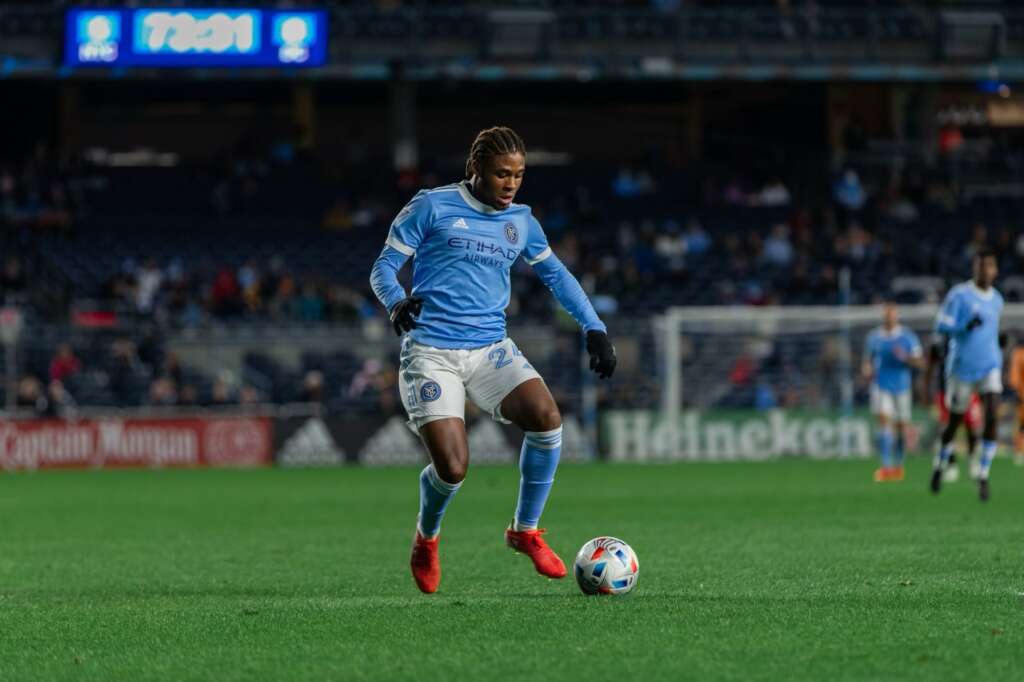

MLS 2022 — American U21 Impact Rankings — Version 15
-


Everything you need to know about the U.S. youth camps this September
-
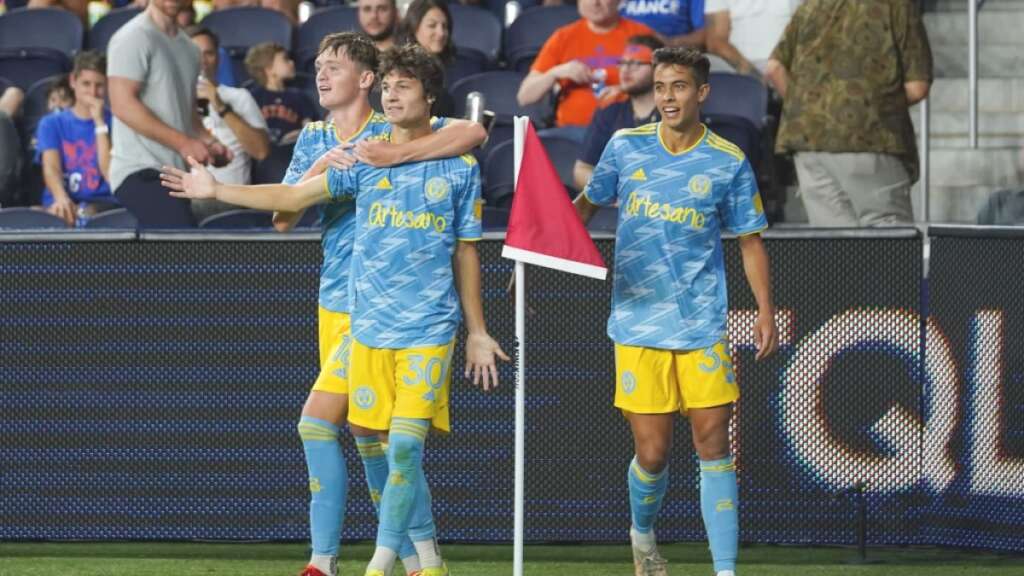

2022 Youth Series: MLS Club Youth Talent Rankings
-


2022 Youth Series: Top 20 Born In 2007
-
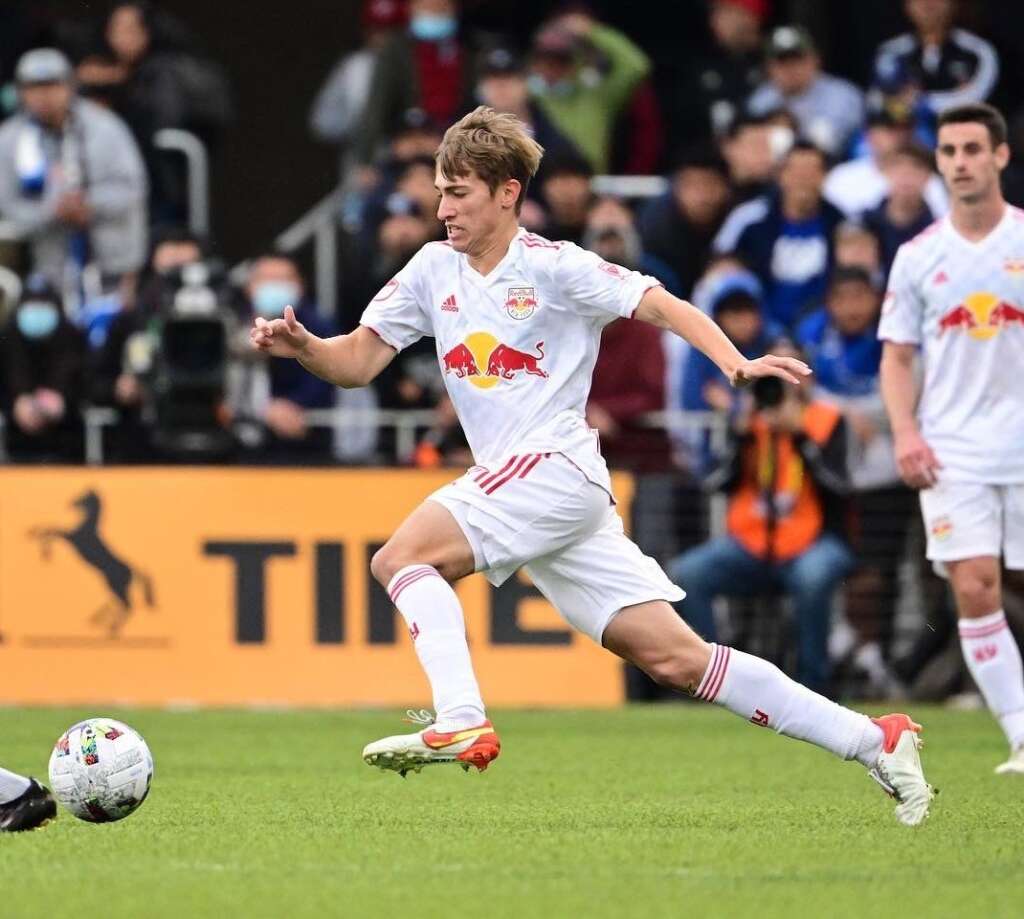

MLS 2022 — American U21 Impact Rankings — Version 14
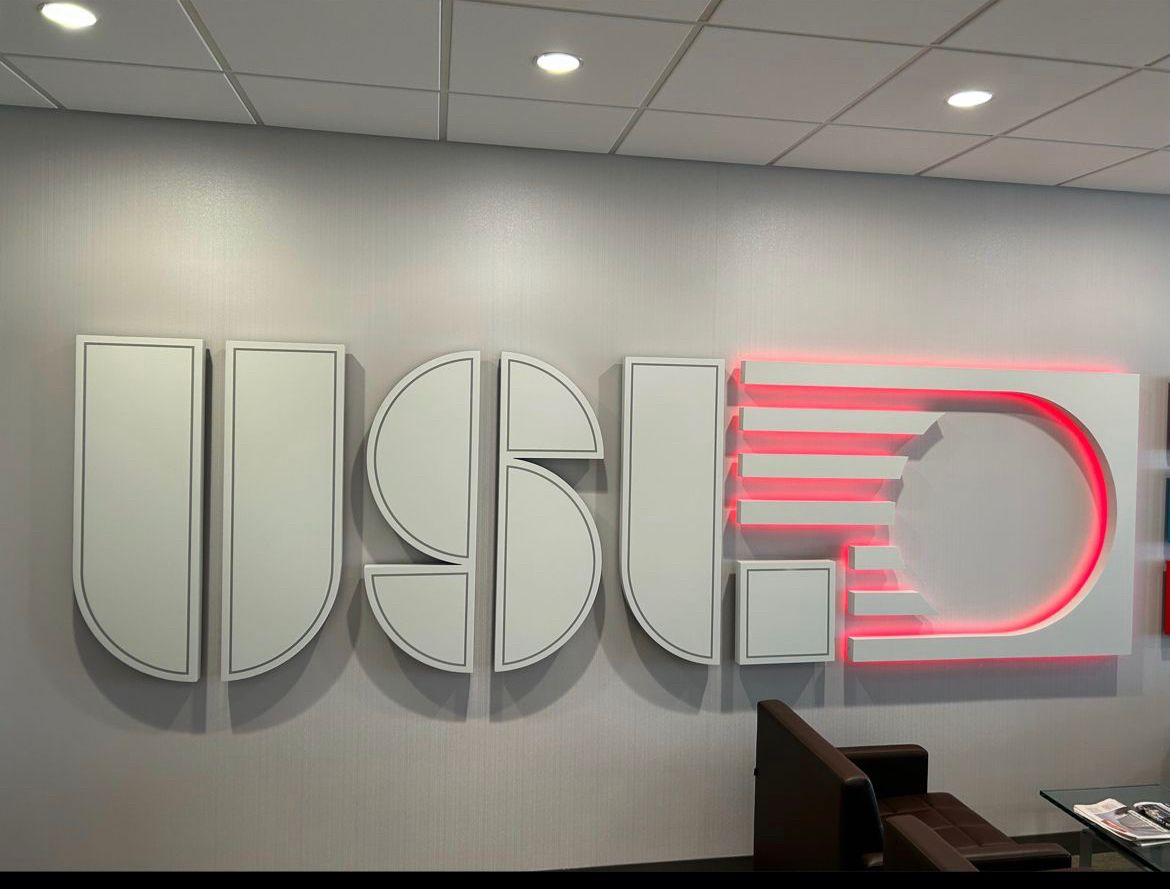
USL made national headlines when they announced on February 13th, 2025, their plans to launch a Division One league, followed by the announcement of promotion/relegation on March 19th for the new Division One league, the Championship, and League One. If sanctioned by US Soccer, USL Division One would be of equal status to MLS and compete for the best major soccer league in the U.S. The implementation of promotion/relegation in the USL would become the first in the U.S. and test the question asked for many years, “would pro/rel work in the U.S.” USL HQ informed the public that they planned to have the inaugural season of Division One during the 2027-2028 season with promotion/relegation beginning in 2028.
Until November 3rd, with the announcement of Tony Scholes being hired as the President of the Division One, only three teams have applied for membership to the inaugural season of Division one: Louisville City, North Carolina FC (who announced at the time of the Scholes news that they would fold until the launch of Division One), and Pittsburgh Riverhounds. There has been a rapid expansion of teams in the already existing leagues since the two announcements. Teams joining League One are: Fort Lauderdale FC (2026 debut), New York Cosmos (2026 debut), Port St. Lucie SC (2027 debut), Sporting Cascades FC (2026 debut), and Rodeo FC (2027 debut). Fort Wayne FC and Sarasota Paradise would also be joining League One from League Two (2026 for both teams). For the Championship, Reno, NV will once again have a team planned for a 2027 debut. Along with those teams, USL is actively working to expand to other markets. The markets and partners they are looking at are Brevard County, FL (Space Coast Pro Soccer), Riverside, CA (Riverside Pro Soccer), Brownsville, TX (City of Brownsville), Winter Garden, FL (Central FL Pro Soccer), Santa Rosa, CA (City of Santa Rosa), and Pensacola, FL (City of Pensacola).
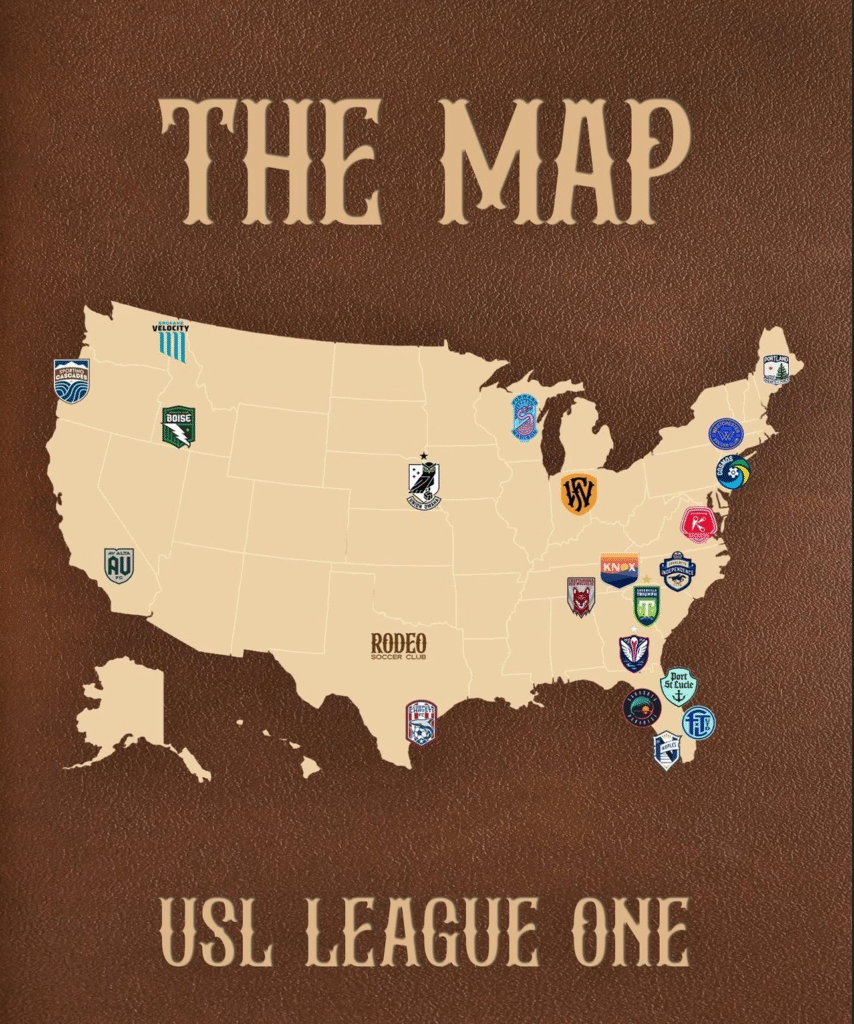
Along with these recently announced teams and partnerships, USL has teams joining the organization just in time for promotion/relegation that were announced prior to the February and March news. Starting with League One, these teams include: Corpus Christi FC (2026 debut) and Athletic Club Boise (2026 debut). As for the Championship, they will be adding Brooklyn FC (2026 debut), Sporting Jax (2026 debut), Atlético Dallas (2027 debut), Milwaukee Pro Soccer (TBD), USL Pro Iowa (TBD), Buffalo Pro Soccer (TBD), and Ozark United FC (2027 debut), while Santa Barbara Sky FC (2027 debut) would replace Memphis 901 FC.
Other than that, news on the Division One and promotion/relegation had been quiet until USL snatched Tony Scholes from the English Premier League. Tony Scholes will be the President of Division and help with the implementation of promotion/relegation. Scholes served as the chief football officer of the EPL and will join USL at the end of the EPL season. As of November 15, 2025, USL Division One has not been sanctioned as a division one league by US Soccer. The hiring of Scholes indicates that they are confident this new league will get approved or they have already been told it will, behind closed doors. The fact that we have not heard news on what the promotion/relegation format would be, and Scholes task would be to help implement it could mean that USL has not come to a decision on one. Since we do not have any ideas on what the format could be, I want to provide a possible option that they could go with.
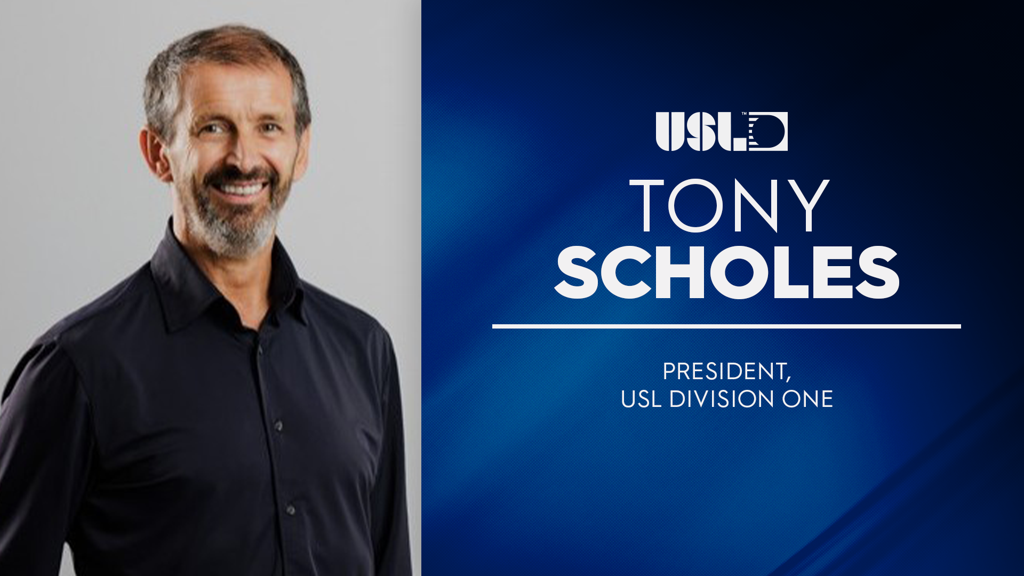
One of the biggest questions people have had since the USL announced promotion/relegation was how they would tie it to the playoffs. There is an option they could do, but it would result in only having one playoff. USL would have a playoff for Division One, but they would eliminate the concept for the Championship and League One. It might not be the most popular idea here in the U.S., but the main goal for the lower leagues is to get promoted, not to win a trophy. They would retain the league title for those two leagues with the winner being the team with the most points at the end of the season, just like how it is in the European leagues. The purpose is to create fairness for the top performing team(s) in the two lower leagues and reduce confusion. If there is a need for a playoff format, they could adopt the format the Bundesliga uses where the 16th best team in the first division and the 3rd best in the second division face-off in a two-leg match to see who would be in the first division the following season. The other option is the Championship concept, where the teams who finished 3rd through 6th in the table compete in a promotion playoff. The semi-finals are two-leg matches while the final is a single-leg match. The winner is promoted to the EPL. The execution of promotion/relegation must be done perfectly to retain fans, gain fans, prevent confusion, and be entertaining.
USL already has a division one league with their women’s Super League, who is competing against the NWSL. Currently, the S League has only nine teams (Brooklyn FC, Carolina Ascent FC, Dallas Trinity FC, DC Power FC, Ft. Lauderdale United FC, Lexington FC, Spokane Zephyr FC, Sporting Jax, and Tampa Bay Sun FC) to the NSWL’s 14 teams (3 teams in the works). The Super League will be adding an additional nine teams (Athletic Club Boise, New York Cosmos, Ozark United FC, Buffalo Pro Soccer, Chattanooga Red Wolves FC, Forward Madison FC, Indy Eleven, Oakland Soul SC, and USL Palm Beach) with all but three to have their inaugural season to be determined. What makes the S League unique from the rest of the soccer leagues in the U.S. is that they use a fall-summer schedule. Competing against a top five women’s league in the world is a tall ask, but it shows the ambitions of USL.
They are also willing to take risks by voting to pass promotion/relegation for the men’s league and have a fall-summer schedule for the S League. If the S League schedule format proves successful, it stands to reason that they would move the men’s leagues to the same schedule. It would also avoid the organization from having to fight MLS for viewership when the leagues are in play, especially when they launch a direct rival and are at their most ambitious point in their history. The same can be done for the S League if promotion/relegation is successful for the men. USL can start establishing lower women’s leagues and introduce promotion/relegation to the women’s game here in the U.S.
Many would say USL still stands no chance at competing against MLS, even with promotion/relegation and having a division one league. That is the case when you look at the quality of the players is finance, but that is the reason why the USL made these decisions based on the reports prior to the announcements and afterwards. Promotion/relegation and the introduction of a division one league could see an increase in investors. We are already seeing that with the likes of Gio Reyna joining Fort Lauderdale as an investor, BellTower Partners investing into USL, Sofia Huerta and Kasey Keller joining the Athletic Club Boise ownership group, and the Chickasaw Nation becoming an investor of the OKC for Soccer just this year alone. Then there is the expansion fee for MLS, MLS Next Pro, and the USL leagues. MLS charges an astounding $500 million! Yes, the money is used to construct a proper stadium, acquire players, etc., but at this point it will discourage many from purchasing a franchise license. MLS currently only has two leagues and one of them is advertised as a development league to prepare for MLS. The expansion fee for an independent team to join MLS Next Pro is unknown, but Sports Business Journal reported in 2024 that it is significantly cheaper than the USL Championship. The fee to join the USL Championship is $20 million while League One is only $5 million. These two fees are significantly lower than MLS and that will be more appealing to potential owners, but unlike the MLS fee, it is not enough for a stadium, training grounds, and players. As for what the fee is to join USL Division One, that is unknown at the moment.
I highly recommend reading the ESPN article by Jeff Carlisle titled “Will USL’s Move to Pro-Rel Change U.S. Soccer, Threaten MLS?” In there, Carlisle discusses the reasons behind the decision and that it is mostly financial. For example, a USL spokesperson said they expect to see an increase in commercial revenue by 15% to 30% due to promotion/relegation. Also, the former owner of San Diego Loyal lost $40 million in 4 seasons. As for the reaction from MLS, we have not heard one yet. The only possible reaction we have seen from them is what the former MLS Next Pro president, Charles Altchek, told to Backheeled back on March 6th, 2025. In the interview, he told them they aim to have 40 to 50 teams and a possible second league with one of the MLS Next Pro leagues being a second division, putting it in direct competition with USL Championship. The biggest question is, whichever league that is, can compete for fans? Due to the Apple TV deal, we currently do not have the ratings of MLS Next Pro. The closest idea we have is the attendance, which is 5,580 for USL Championship per match to MLS Next Pro’s 3,361, according to Transfermarkt. Unlike the attendance, the viewership for USLC is much higher where the season premiere match had 453,000 viewers. MLS Next Pro’s massive expansion plan announcement date was either a coincidence, or MLS got word USL’s promotion/relegation implementation with the division one news, and this was their response. I will let you come to your own decision.
It seems, as of right now, it appears MLS will sit back and wait to see how the USL’s Division One and promotion/relegation will play. Division One and promotion/relegation will either be successful for USL and lead them to the financial success they are hoping for or lead to the possible collapse of USL. American sports fans are not the only ones keeping their eyes on USL now, but the rest of the soccer world is after their two massive news. The coming years are going to be exciting times for American soccer!
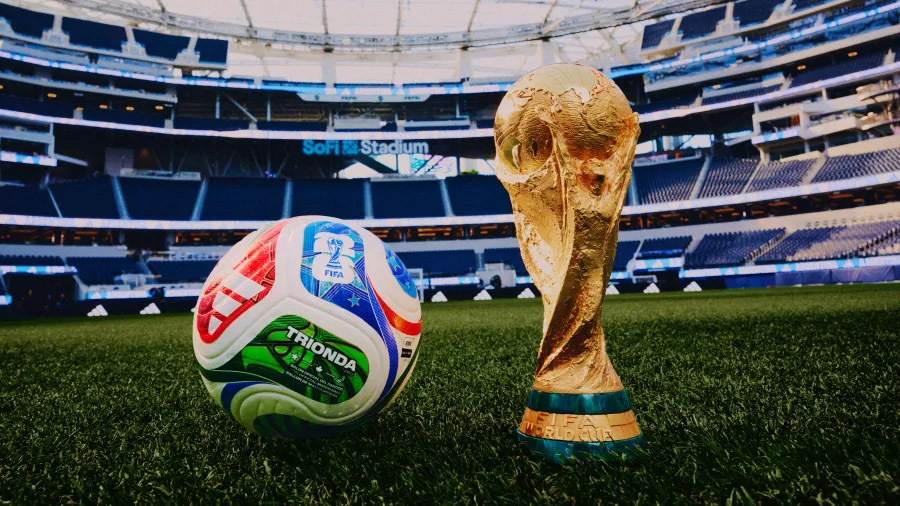
From Maradona to Messi: A Quick Look at World Cups 1986–2022
Thomas Deschaine (@uskeeper on X and us_keeper on Instagram)
A quick look back at the last ten World Cups reveals how the world’s greatest sporting event has evolved and grown through the decades. With over 200 days until the 2026 FIFA World Cup kicks off, here’s a high-level recap of the tournaments that shaped its legacy, and a glimpse of what’s next.
1986 – Mexico
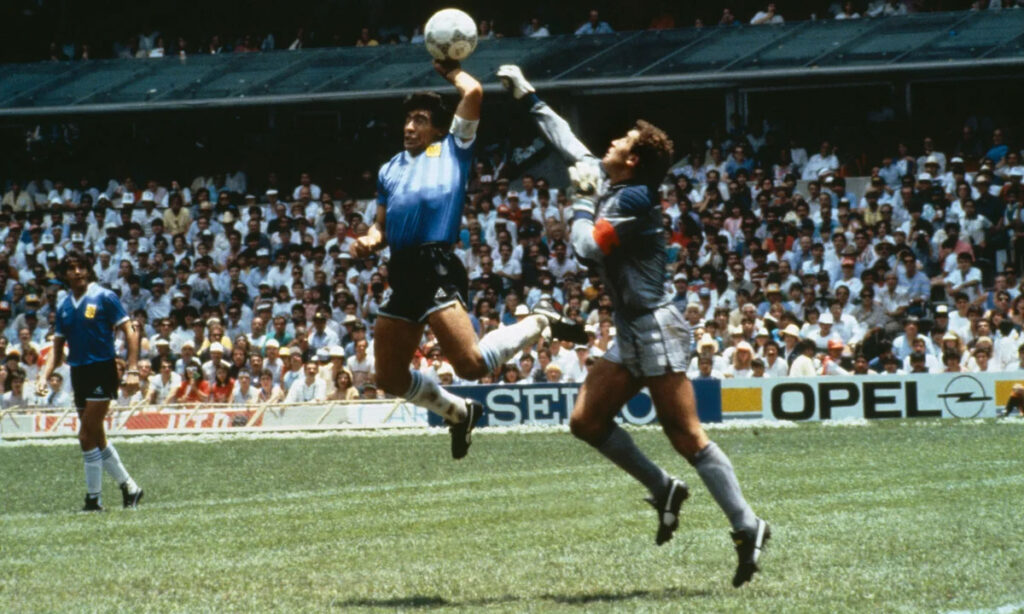
Diego Maradona delivered a World Cup for the ages, scoring both the “Goal of the Century” and the infamous “Hand of God” in the same match, then leading Argentina past West Germany to claim their second World Cup title.
1990 – Italy

The USA returned to the World Cup after a 50-year absence in what became the lowest-scoring tournament in history, as West Germany edged Argentina 1–0 on a late penalty. It marked West Germany’s final World Cup before reunification.
1994 – United States
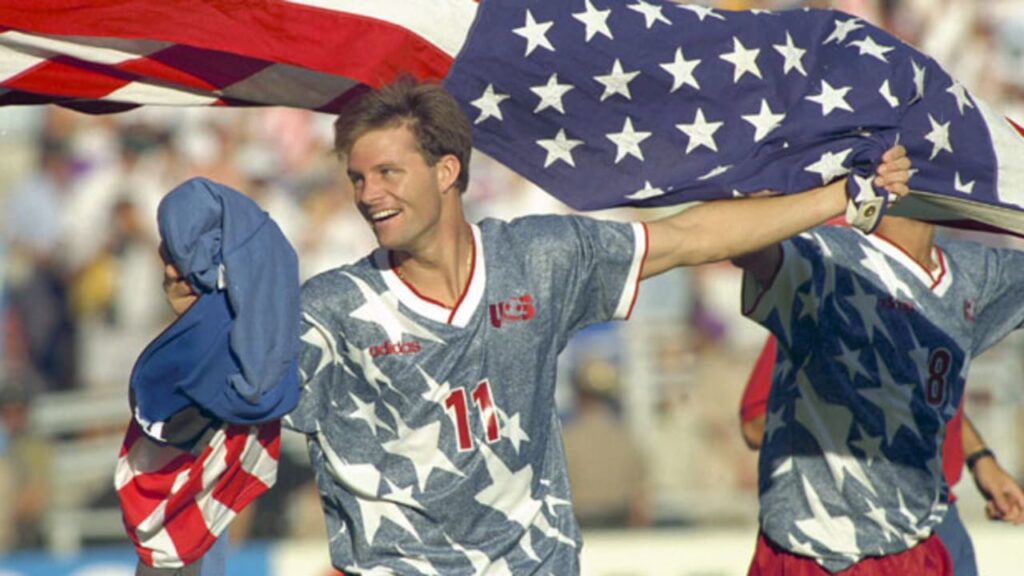
The USA hosted its first-ever World Cup, setting all-time attendance records as Brazil defeated Italy in the tournament’s first final decided by a penalty shootout in front of the largest crowds in US since the 1984 Olympics.
1998 – France
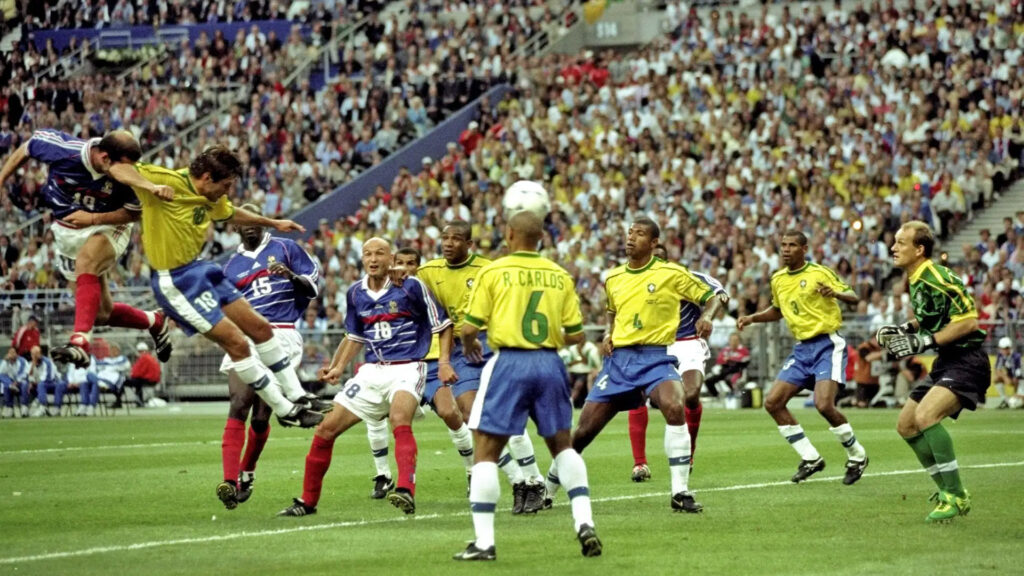
FIFA’s first 32-team World Cup saw host nation France capture its first-ever title, becoming the seventh country to win the trophy. Led by Zinedine Zidane triumphed on home soil with a commanding victory over defending champions Brazil.
2002 – South Korea/Japan
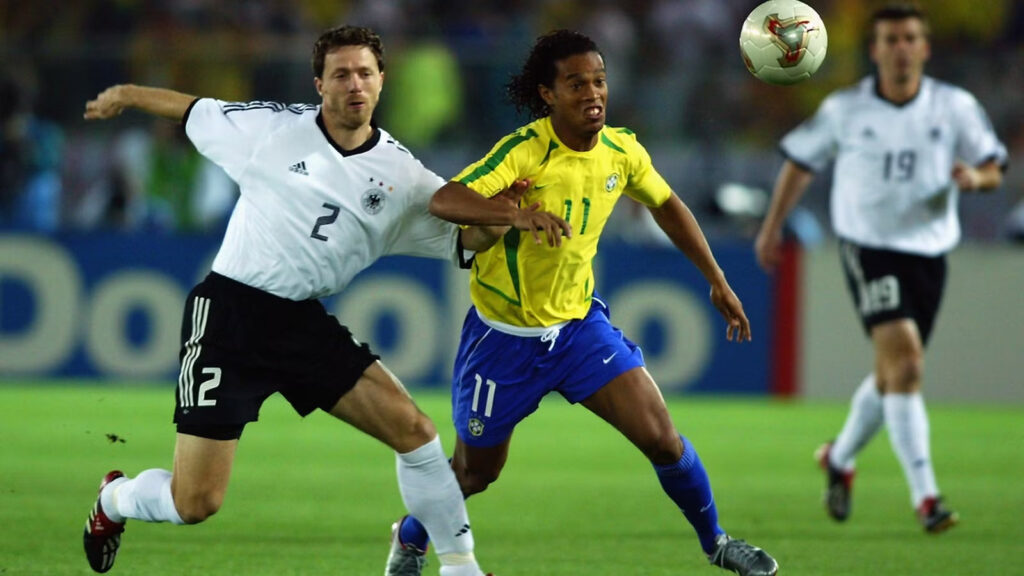
The first World Cup with co-hosting nations saw South Korea stun many by reaching the semifinals, while Brazil claimed their fifth title, powered by Ronaldo’s two goals in the final against Germany.
2006 – Germany

Germany came up short on home soil, losing in extra time to eventual first-time finalist Italy in the semifinal. Italy went on to claim its fourth World Cup, edging France on penalties in a final forever marked by Zidane’s infamous headbutt in extra time.
2010 – South Africa
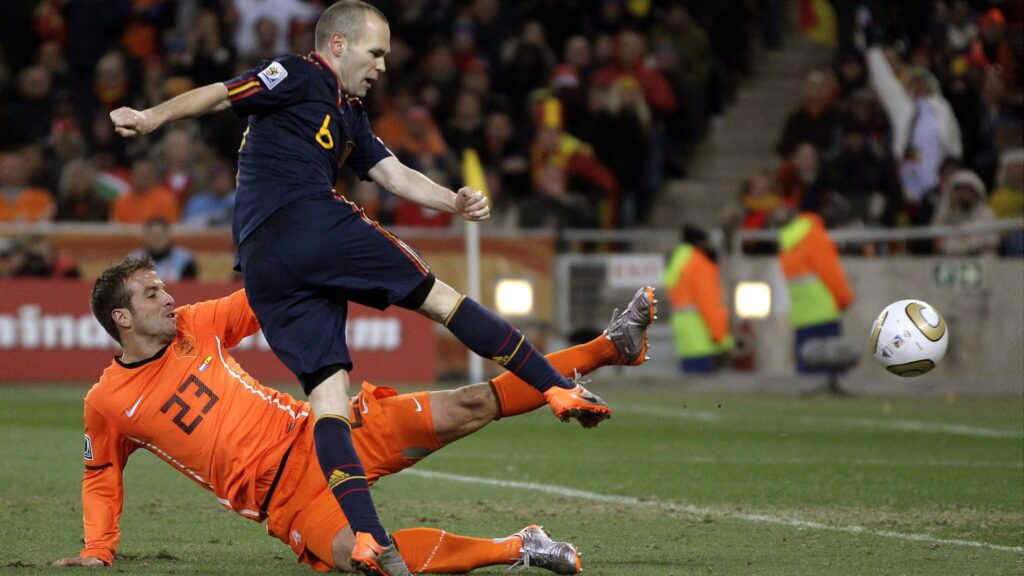
The first World Cup hosted by a CAF nation, South Africa, saw the host nation become the first ever to fail to advance past the group stage. Meanwhile, Spain captured their first World Cup, showcasing their tiki-taka mastery and defeating the Netherlands in extra-time with Andrés Iniesta’s decisive goal.
2014 – Brazil
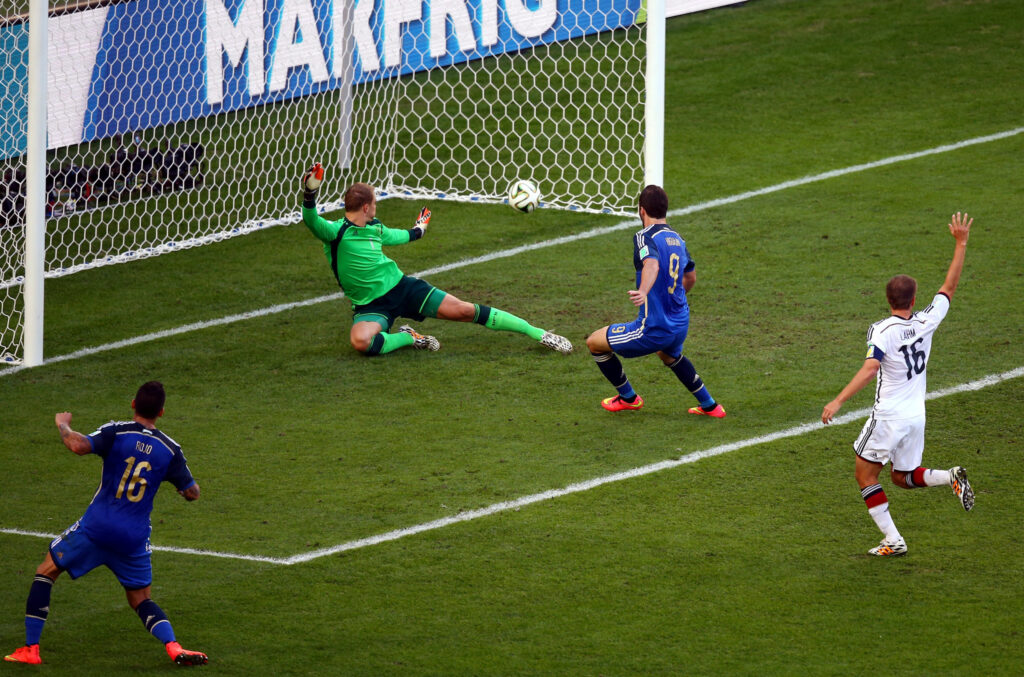
Host nation Brazil reached the semifinals on home soil but suffered a shocking 7–1 defeat to Germany and then fell 3-0 to the Netherlands in the third-place match. Germany went on to defeat Argentina in extra time, with Mario Götze scoring the decisive goal, while Lionel Messi claimed the Golden Ball as the tournament’s best player.
2018 – Russia
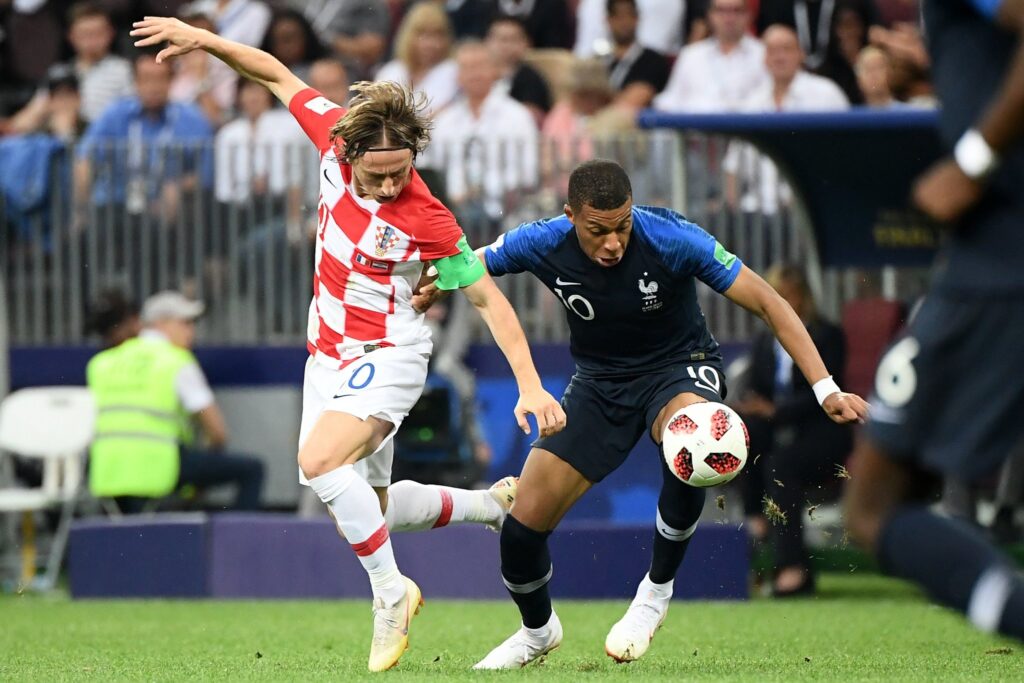
France’s golden generation, spearheaded by tournament Best Young Player Kylian Mbappé, captured their second World Cup title with a thrilling 4–2 victory over Croatia, led by Golden Ball winner Luka Modrić.
2022 – Qatar

The 2022 World Cup, overshadowed by controversies over migrant worker treatment and extreme heat, which pushed the tournament to November and December, ultimately delivered a historic finale. Lionel Messi achieved crowning glory as Argentina triumphed on penalties in a thrilling 3–3 final against France, highlighted by Kylian Mbappé’s hat-trick.
2026 – United States/Mexico/Canada
The 2026 World Cup will feature a major expansion from 32 to 48 teams and, for the first time ever, be hosted by three nations. Mexico will make history as the first country to host matches in three different World Cups, while the United States becomes the sixth nation to host at least twice. What unforgettable moments will define this landmark tournament?
USMNT
One Home or Many? The Debate Over a Primary Venue for U.S. Soccer
Published
1 month agoon
October 16, 2025
Thomas Deschaine (@uskeeper on X and us_keeper on Instagram)
The logics of the United States make it almost impossible for the USMNT or USWNT to have a primary venue to play all of their home matches but a trend of playing in a handful of stadiums has been developing over the last couple of cycles. US Soccer says there are specific factors behind where matches are played, some make sense, while others come across as lazy or lacking creativity.
If and when Major League Soccer aligns with the FIFA calendar and observes international breaks, more MLS stadiums could become available for matches. While not all MLS venues currently feature natural grass, US Soccer has indicated they would be willing to invest in installing grass, though at a cost of around $500K and with potential concerns about surface reliability.
Global Approach to Scheduling
Many of the top-tier international teams play their World Cup qualifiers and other critical matches in a primary venue or two. Here’s a sample of some of those countries and generally where they play based on my research.
Here are some of the more notable nations that play nearly all of their home matches at a single venue, a setup made practical by their smaller size and simpler logistics, which also makes it easier for fans.
Germany and Spain are known for rotating their non-critical home matches across multiple venues.

Argentina-Estadio Monumental (River Plate)
Belgium– King Baudouin Stadium (Brussels)
Colombia-Estadio Metropolitano Roberto Meléndez
England-Wembley Stadium
France– Stade de France (Saint-Denis, near Paris)
Italy-Stadio Olimpico
Northern Ireland-Windsor Park (Belfast)
Norway-Ullevaal Stadion (Oslo)
Portugal– Estádio da Luz (Lisbon)
Republic of Ireland-Aviva Stadium (Dublin)
Scotland-Hampden Park (Glasgow)
Uruguay-Estadio Centenario
Wales-Cardiff City Stadium
What’s in a location?
Here’s a look at the past few cycles, highlighting the USMNT’s home matches and the venues they’ve used. While US Soccer has clarified that they don’t control Gold Cup or Nations League venue selection, a point still under debate, they do manage the locations for Friendlies and World Cup qualifiers and continue to review and adjust those choices.
2026 Cycle (Matches Scheduled Through the end of 2025) – 46 Home Matches – 30 unique cities
So far, half of the USMNT’s home matches in the 2026 cycle have been held across eight venues. Only two more windows, March and May/June, remain for Friendlies before the 2026 World Cup.
- 4-AT&T Stadium, Arlington, Texas
- 4-Energizer Park, previously CityPark, St. Louis, Missouri
- 4-Q2 Stadium, Austin, Texas
- 3-Inter&Co Stadium (previously Orlando City Stadium and Exploria Stadium, Orlando, Florida
- 2-Allegiant Stadium, Paradise, Nevada
- 2-Geodis Park, Nashville, Tennessee
- 2-Rentschler Field, East Hartford, Connecticut
- 2-TQL Stadium, Cincinnati, Ohio
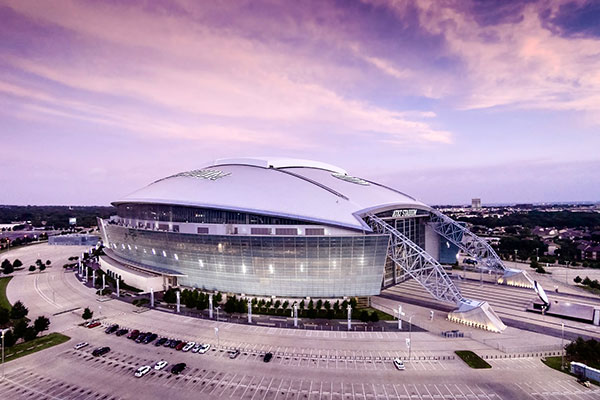
AT&T Stadium, Arlington, TX
2022 Cycle – 43 Home Matches – 24 unique cities
I can almost give US Soccer a pass on city and venue selection during the 2022 cycle, given the global circumstances at the time. That said, it’s interesting that they scheduled three consecutive home World Cup qualifiers in Ohio, with final round two matches in Columbus. Columbus has been a recurring choice, hosting multiple qualifiers in 2014, 2018, and 2022, handling one match each during both the semifinal and final rounds of qualifying in 2014 and 2018.

Lower.com, Columbus, Ohio
2018 Cycle – 47 Home Matches – 33 unique cities
During the 2018 cycle, the USMNT played in a wider variety of cities and venues. Aside from four matches in Carson, California for the January camp, they only repeated a location eleven times.

Dignity Health Sports Park, Carson, CA
2014 Cycle – 43 Home Matches – 29 unique cities
During the 2014 cycle, the USMNT repeated cities twelve times, but only two cities hosted more than two matches: Carson, California, where two of three games were for Camp Cupcake, and Kansas City, Kansas, which hosted three matches.

Children’s Mercy Park, Kansas City, Kansas
2010 Cycle – 35 Home Matches – 18 unique cities
One of the leanest home schedules in recent cycles saw the USMNT play in just 18 different cities, with 11 of them hosting only a single match. Over half of their home games were concentrated in four cities: Carson, California (7 matches); Chicago, Illinois (5 matches); and Foxborough, Massachusetts and Washington, D.C. (3 matches each).
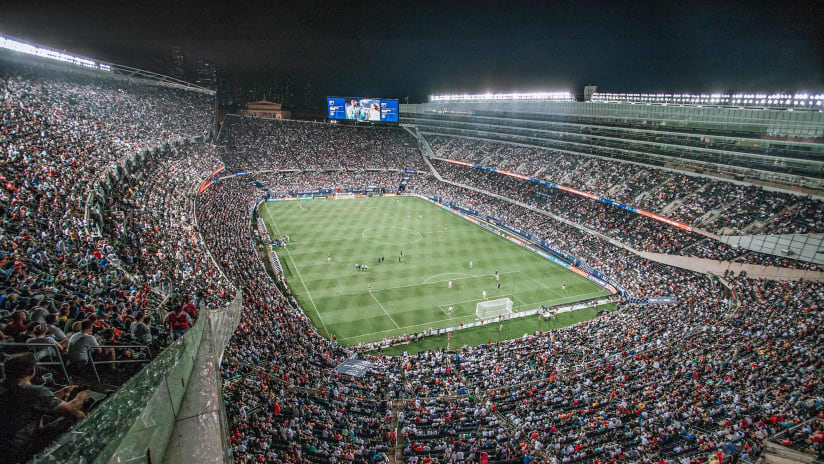
Soldier Field, Chicago, IL
2006 Cycle – 44 Home Matches – 24 unique cities
The USMNT played eight matches in Foxborough, Massachusetts—double the number held in the next two cities, Columbus, Ohio, and Miami, Florida, which each hosted four matches. Notably, the team has excelled in Foxborough, losing only once in 22 games played there.

Foxboro Stadium, Foxborough, MA
2002 Cycle – 38 Home Matches – 16 unique cities
During the 2002 cycle, California was clearly a preferred destination for the USMNT, hosting matches in five different cities across twelve games. Foxborough, Massachusetts, and Washington, D.C. each hosted five matches as well.

Rose Bowl Stadium, Pasadena, CA
1998 Cycle– 40 Home Matches – 21 unique cities
Washington D.C. was the city of choice for the USMNT during the 1998 cycle playing six matches. The USMNT would also play more than two matches in Los Angeles, California (5 matches), Foxborough, Massachusetts (4 matches) and Pasadena, California (3 matches) while playing only one match in twelve other cities.
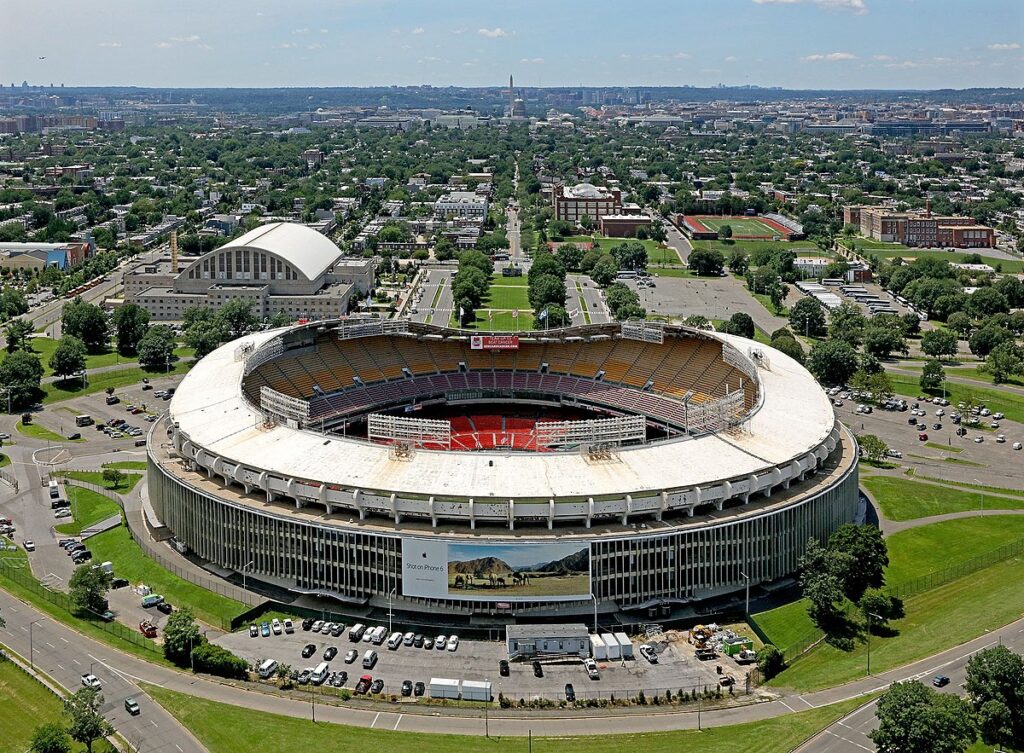
RFK Stadium, Washington, DC
Long Term Venue Strategy
While US Soccer may favor a single venue for most USMNT and USWNT matches, doing so would limit access for thousands of fans across the country. However, with the move to Georgia and the Arthur M. Blank U.S. Soccer National Training Center set to open in early 2026, ahead of the World Cup, it’s likely that future matches will focus on venues within three to four hours of Atlanta. We can expect the majority of games to continue taking place in roughly ten to twelve core cities.
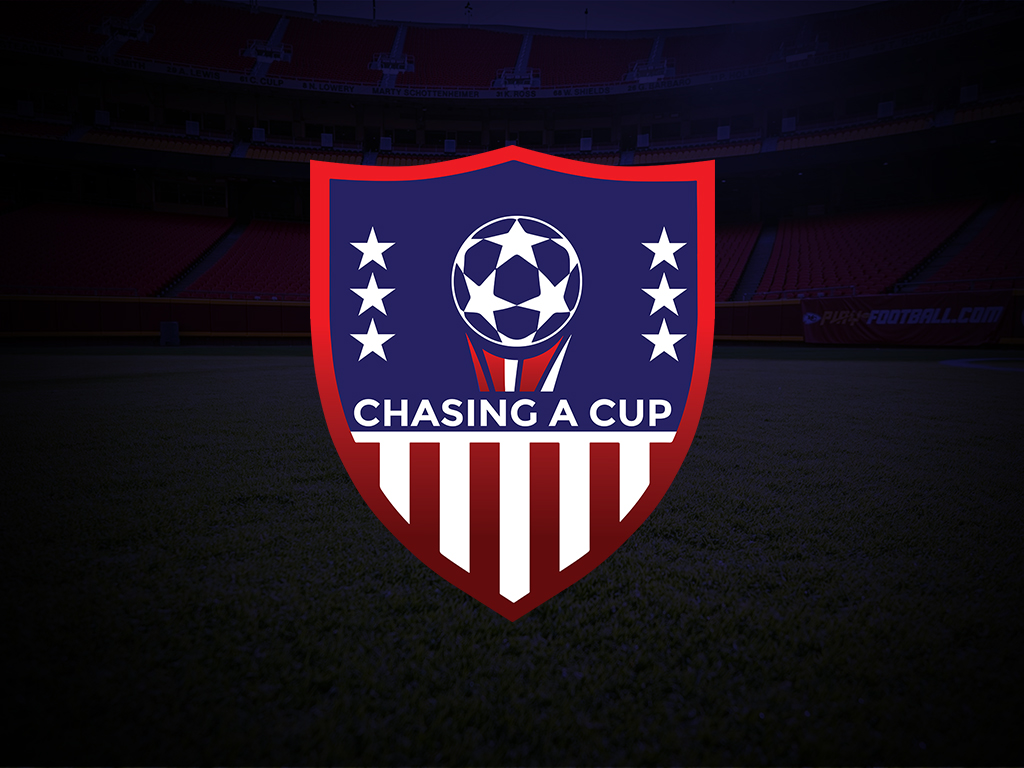

USL’s American Soccer Dream

From Maradona to Messi

One Home or Many? The Debate Over a Primary Venue for U.S. Soccer

Trending
-

 Club News1 year ago
Club News1 year agoAmerican Transfers: Stock Up & Stock Down
-
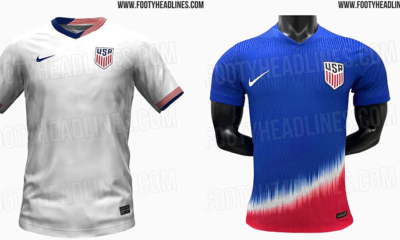
 USMNT2 years ago
USMNT2 years agoUSMNT Kits Come in Different Styles and Colors
-

 Club News6 years ago
Club News6 years agoJulian Vincente Araujo
-
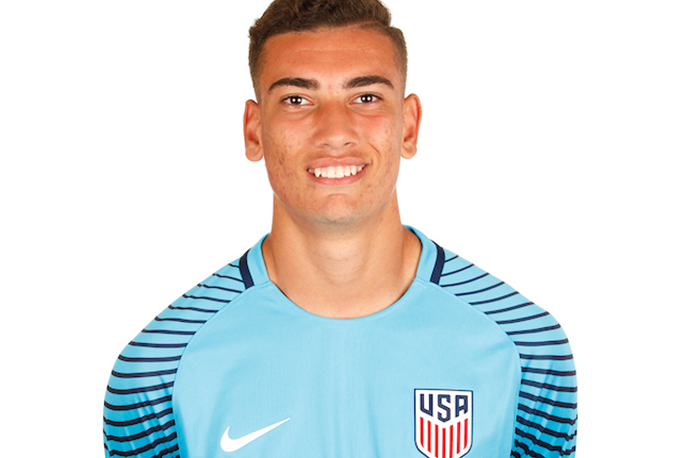
 Club News5 years ago
Club News5 years agoCJ dos Santos, Benfica
-

 USMNT5 years ago
USMNT5 years agoA Hidden Gem: Barça Residency Academy
-
USMNT3 years ago
World Cup Format History
-
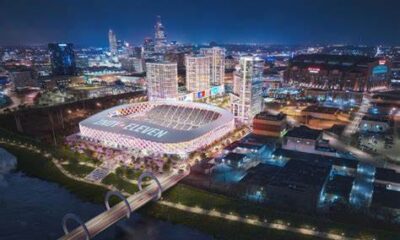
 USMNT2 years ago
USMNT2 years agoIs the MLS Specifically Targeting Expansion to USL Cities?
-
USMNT6 years ago
MLS Quota

